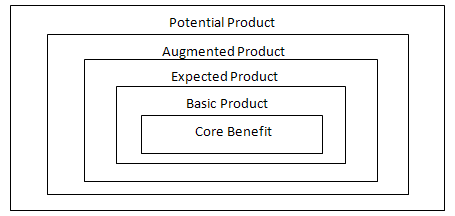Competition Strategy – Dealing with the Competition
April 3, 2025
 Competition Strategy – Dealing with the Competition
Competition Strategy – Dealing with the Competition
Consumer and business markets have distinct characteristics by which they function. Earlier, importance was given mainly in understanding customer and their business. But in this age of technology and globalization companies cannot afford to ignore competition. Many companies are lowering their cost by outsourcing production to Asian countries. Companies must keep an eye on strategies…
 Analyzing Consumers Buying Behaviour
Analyzing Consumers Buying Behaviour
The core function of the marketing department is to understand and satisfy consumer need, wants and desire. Consumer behaviour captures all the aspect of purchase, utility and disposal of products and services. In groups and organization are considered within the framework of consumer. Failing to understand consumer behaviour is the recipe for disaster as some…
 Country of Origin Effects on Marketing
Country of Origin Effects on Marketing
What is a County of Origin Effect? COO or Country of Origin Effect refers to the practice of marketers and consumers associating brands with countries and making buying decisions made on the country of origin of the product. For instance, as we shall discuss later, we tend to associate quality with the Japanese and precision…
Marketing strategy of a company revolves around 4Ps - Product, Price, Place and Promotion. Companies devise a strategy by mixing the four. The most important among is the product. All the marketing push and promotion will go waste if the product is not able to deliver. To come out with winner product, companies have to understand target customers needs and requirements.
Anything which companies produce to satisfy particular needs and demands is referred to as a product. Product is a broad category ranging from physical goods, tourism to managing a celebrity.
A product can be classified as to be made of five levels as shown in the figure below:-

The core benefit is the underlying segment product is offering. For example, customer is buying commuting power when she purchases a car. Cars are fitted with comfortable seats, seat cover, and have desired color, converting a core product into the basic product. Companies are in business of providing value to products. At the expected level companies offer music system, child lock system and temperature control features. An augmented product provides more than customer expectation like a chrome wheels or sun/moon roof. However, augmentation increases the price of the product and customers have to pay extra. An augmented product gets converted into an expected. At potential level companies provides products considering all the possible augmentation.
The product itself is arranged in a hierarchy like need family, product family, product class, product line, product type and item based on needs it satisfies. Further product can be classified on durability, tangibility and usage. Durability comprises of durable and non-durable goods. Non-durable goods comprises of product like soap and beer, which are of frequent purchase and usually consumed quickly. These goods are available at many locations and require more allocation for advertising. Durable goods include TV, washing machines and music system. These goods require more personal touch for selling as the customer would like to understand all features and functions. Intangible products are in the form of services, like haircutting and car repair.
Product usage divides the product into industrial goods and consumer goods. Convenience goods are consumer goods, which can be bought by the customer without much fuss, for example, soaps, beer and newspaper. Shopping goods are type of consumer goods where in customer compare characteristics with other products in same category bases on price, quality and appearance, for example, clothing, furniture and used car. Specialty goods are type of consumer goods where consumers need to make extra efforts in purchasing them, for example, yacht or luxury car. Unsought goods are consumer goods, which are not part of daily life and routine, for example, smoke detectors and cemetery plots.
Industrial goods can be further classified into capital goods and regular business supply. Capital goods are type of industrial goods, which are required for production of final products, for example, plant and machinery. Business goods are type of industrial goods, which are required for day to day functioning as well as on special occasion, for example, office supplies, lubricants and spare parts.
Another important aspect of product strategy is branding. Branding is process of giving identity and image to the product as to create an impression in the mind of consumer. Branding is a long process involves lots of investments in terms of money and time from the company. Building brand identity involves designing name, symbol and logo for the product. Branding involves developing strategy to create a point of differentiation from competitors as well point of similarity with product class. Brand which reaches a high level of awareness and enjoys the loyalty from customer develops brand equity. Packaging of the products also forms part of branding strategy.
Creating a unique product identity and branding strategy is important in formulating success of the company. Customer’s purchase decision will be based on attractive product and branding strategy.
Your email address will not be published. Required fields are marked *